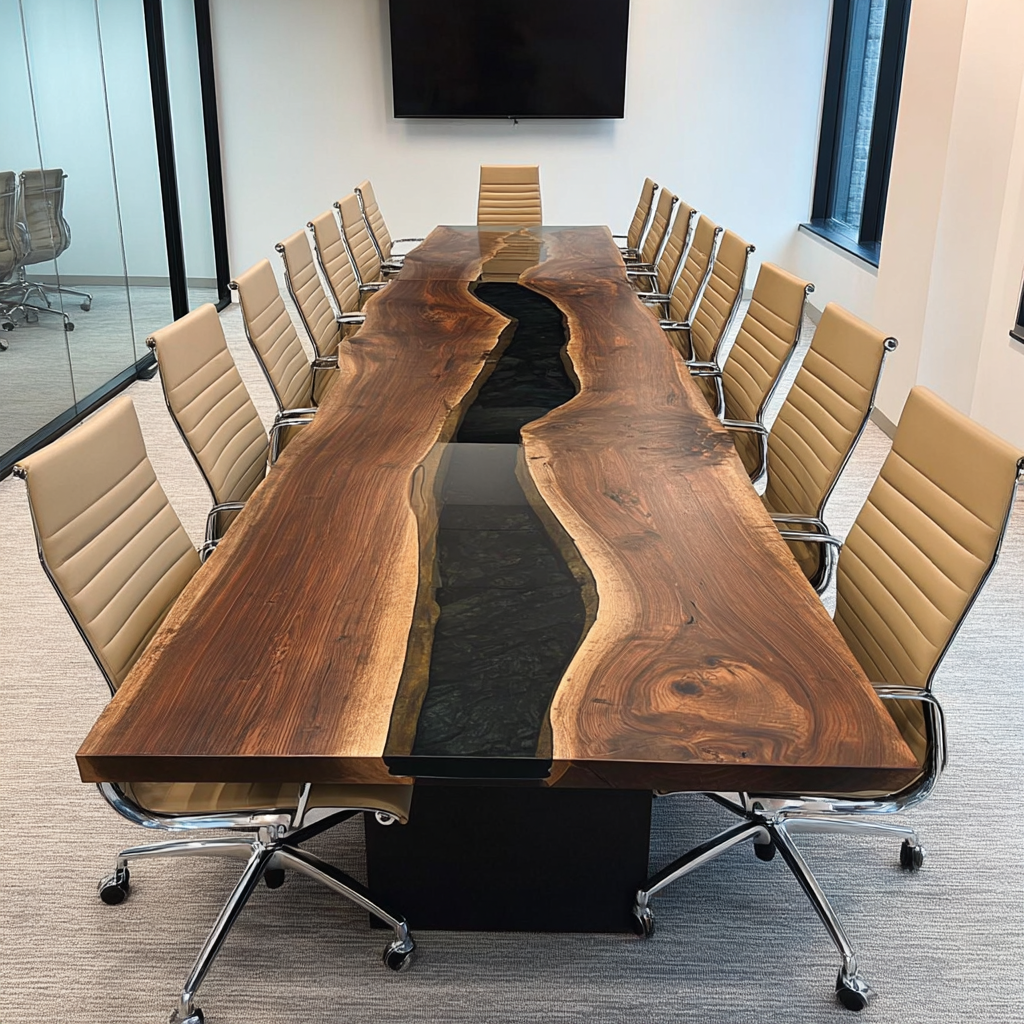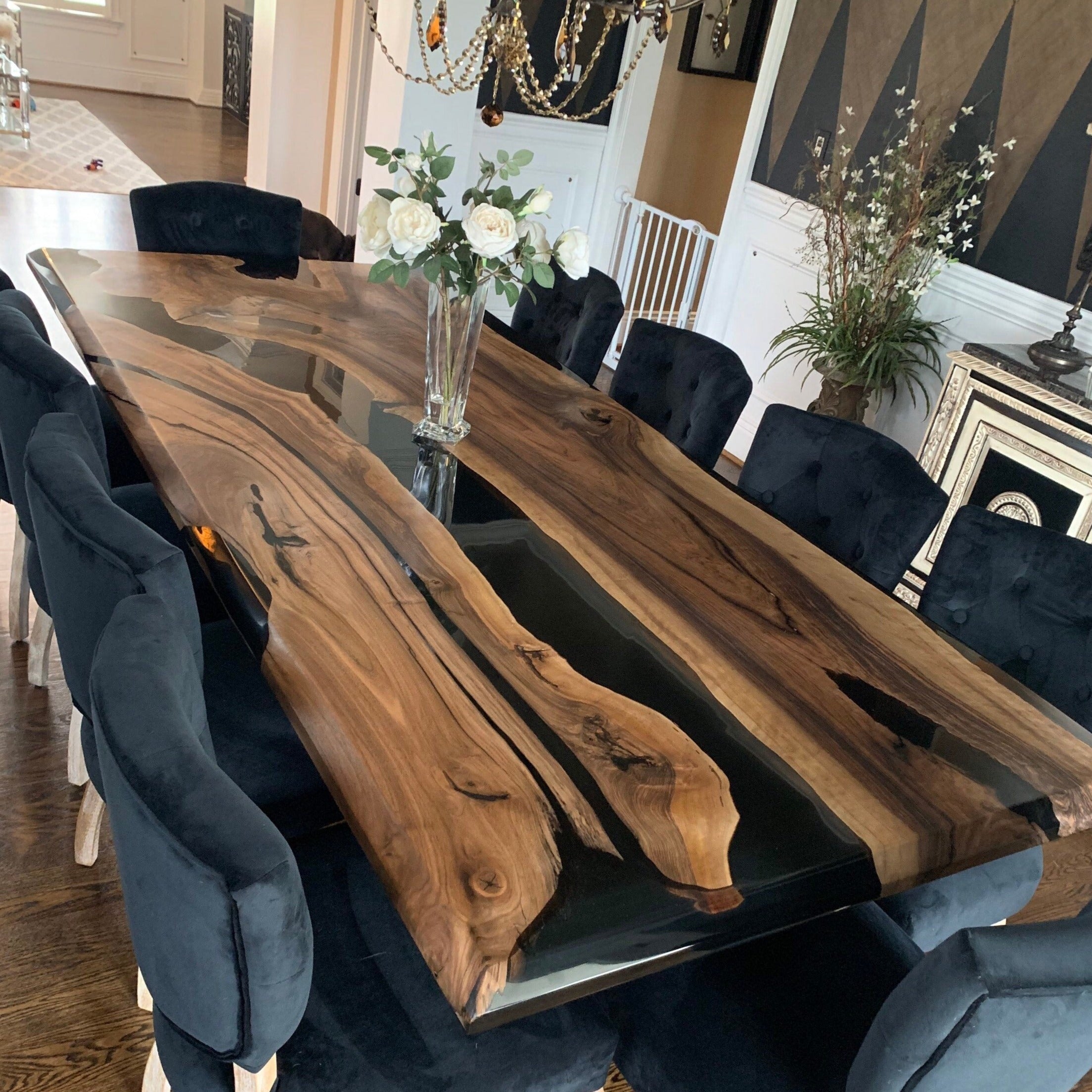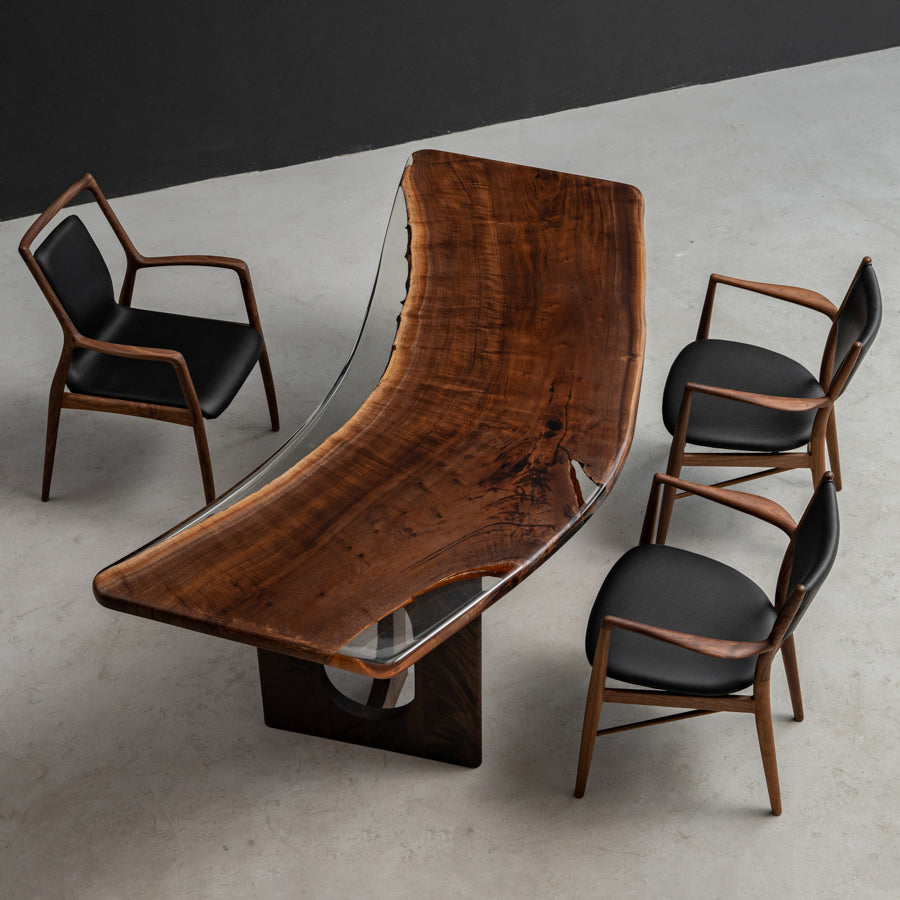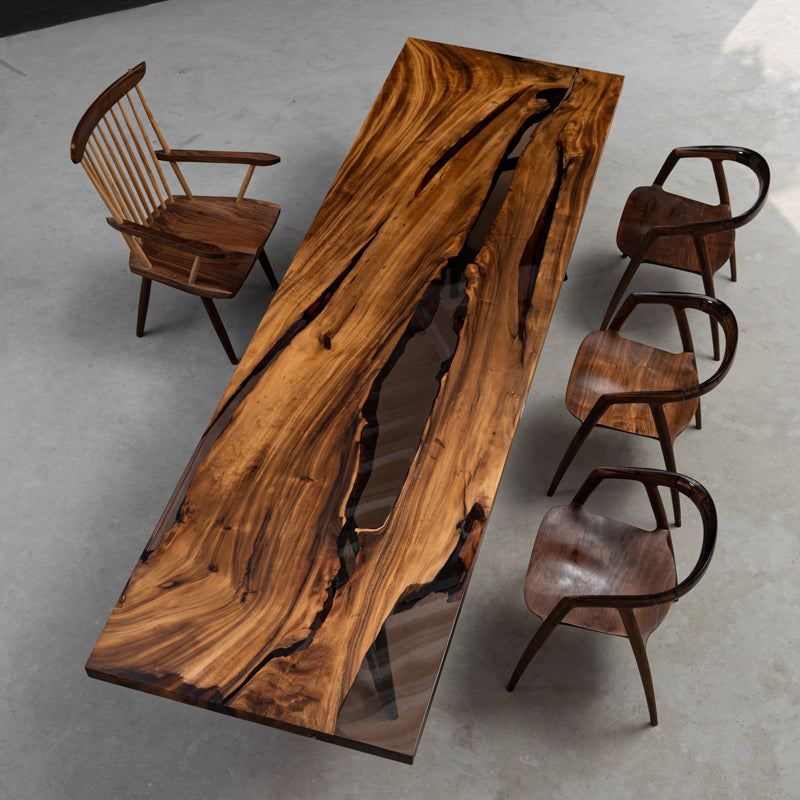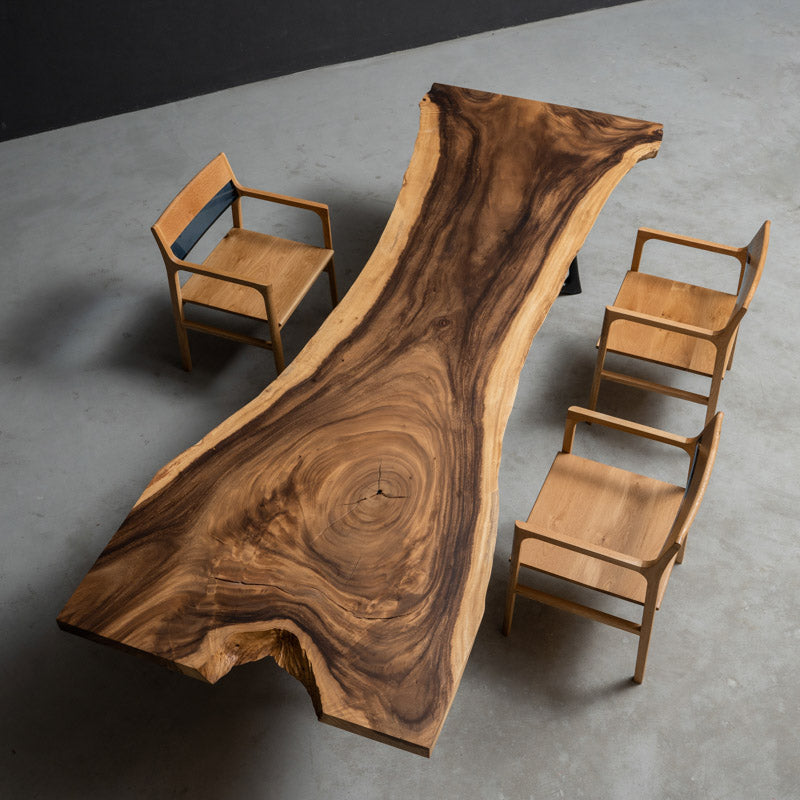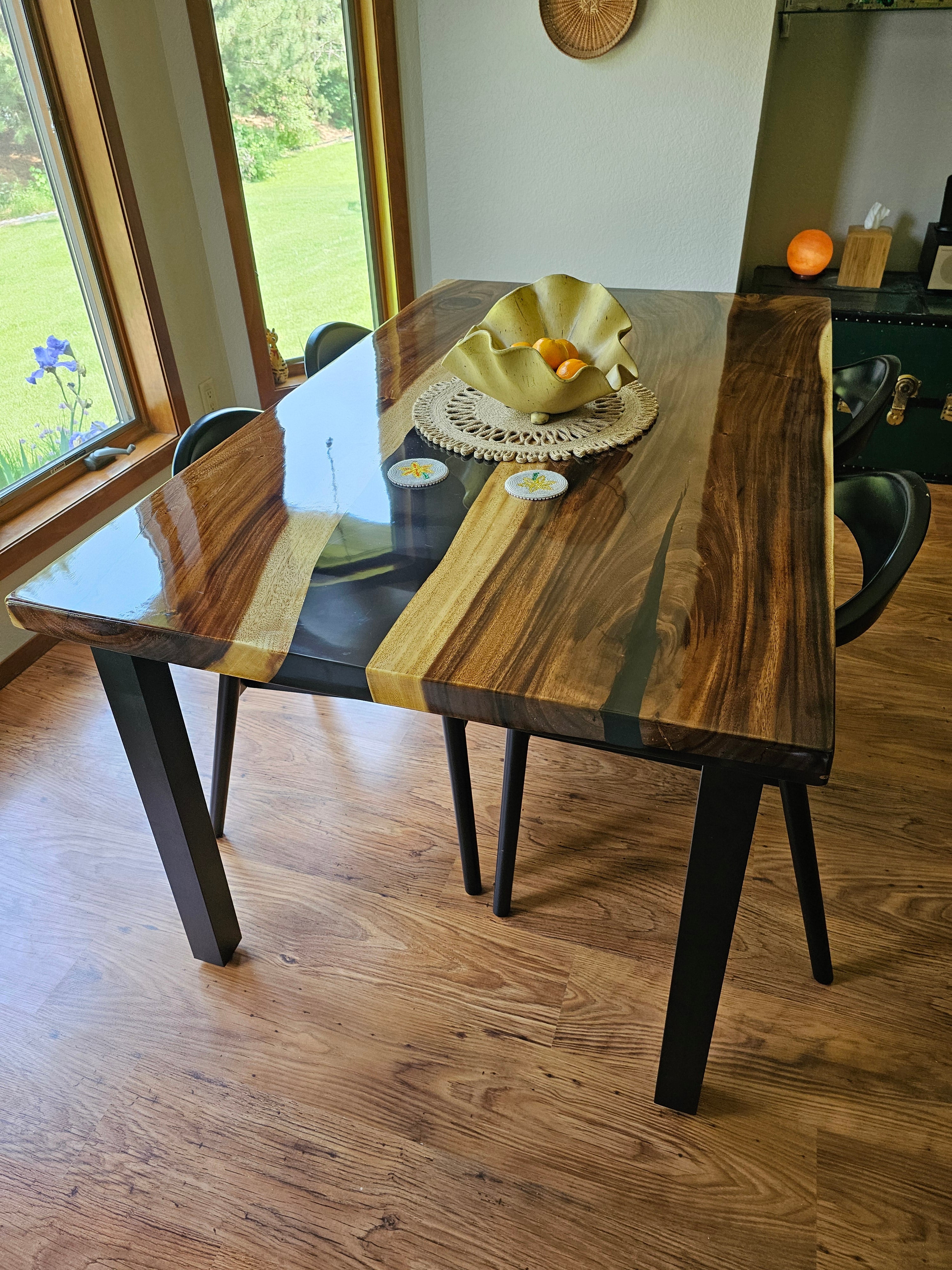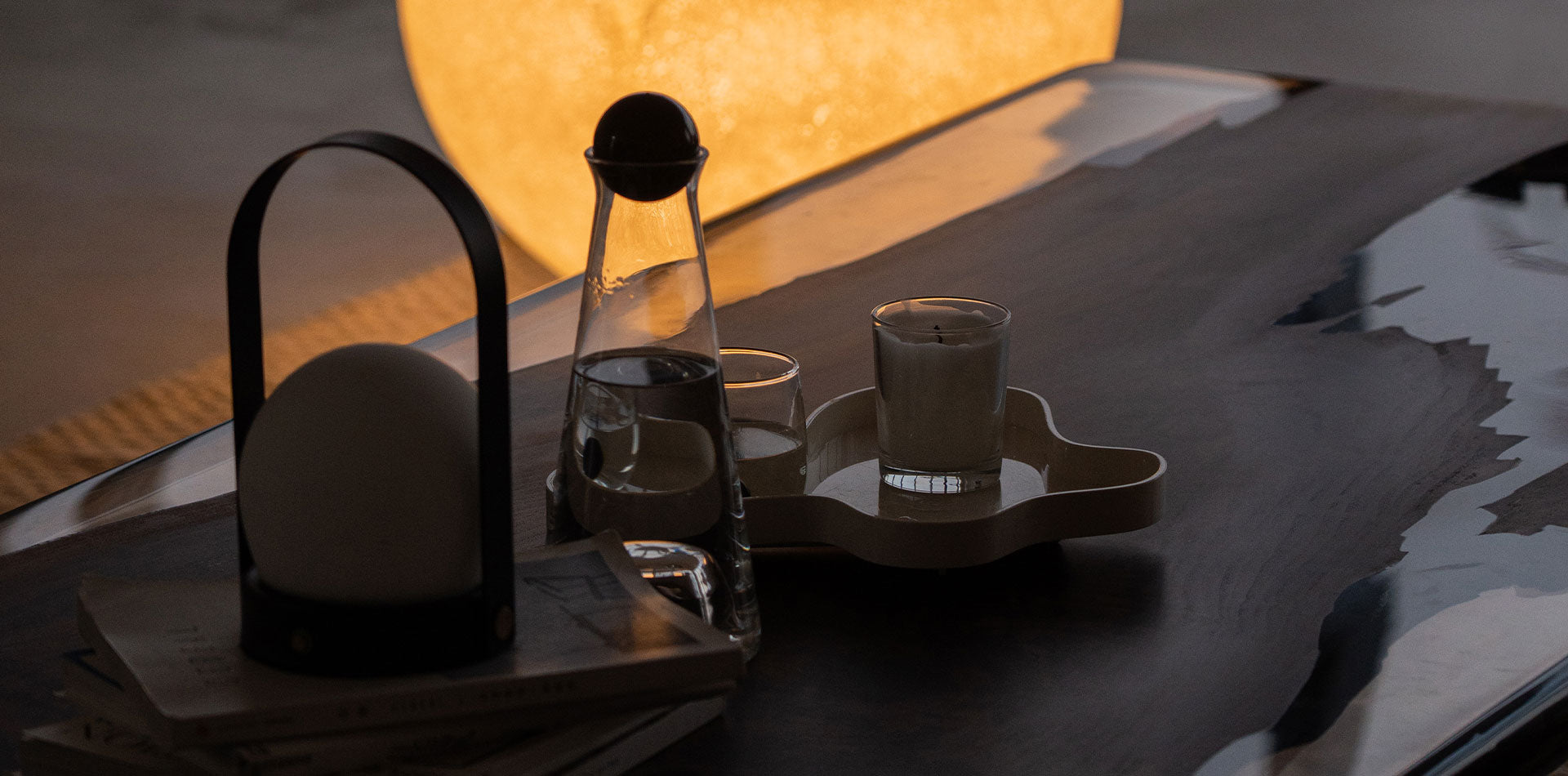I believe that everyone starts to understand epoxy tables from the wood part. When choosing, the first thing you see is the type of wood used. Various types of wood have their own characteristics and always present different beauty and uniqueness. However, one point that many people easily overlook when customizing tables is whether the nature of the wood is suitable for the size of the table? If you don’t understand this, then I hope the following blog can bring you some inspiration.
The following types of wood are suitable for making Large-Sized Wood Epoxy Tables:
Large tables require higher stability and load-bearing capacity of wood.
Black walnut is hard and not easy to deform, suitable for long tabletops. Its appearance is dark brown with natural wavy patterns, which is in sharp contrast with resin and suitable for light luxury and modern styles. It has a moderate natural oil content and is not easy to crack. It is more expensive and difficult to cut.

Ash wood has high hardness and strong load-bearing capacity, making it suitable for large-sized desktops. Its texture is clear, and the light-colored wood grain + resin presents a good light-transmitting effect, which is suitable for Nordic and industrial styles. However, it is also because of its high hardness that it is easy to burr when cutting and requires fine grinding.

Walnut is slightly softer than black walnut, but still has good stability, suitable for large tables with a medium budget. It has a warm tone and is suitable for retro and country styles. However, it is necessary to ensure that the moisture content meets the standard (below 10%), otherwise it may deform slightly.

The following types of wood are suitable for making Small -Sized Wood Epoxy Tables:
Small tables can pay more attention to aesthetics and ease of processing.
Olive wood has wild texture, dark oil lines + irregular lines, suitable for personalized design. It has high density and good stability, suitable for small tea tables and bars. However, it is expensive and needs fine grinding when cutting (prone to burrs)

Poplar wood is easy to process and has a soft texture, making it suitable for carving and curve design. It is a light-colored wood that is suitable for Japanese and minimalist styles. However, its stability is average and requires thick resin to enhance support. Generally, a layer of transparent resin is required.

Cunninghamia wood is extremely light and easy to cut, making it suitable for DIY or low-cost small tables. In addition, it is easy to deform, so it is not suitable for tables with high load-bearing requirements. In addition, it is recommended to use a full glossy surface to avoid cracking or deformation during production.

In summary, black walnut (best stability) is the first choice for large tables, and ash (high cost performance) is the second choice. For small tables, choose olive wood for artistic sense; choose poplar for minimalist style; choose fir for low cost (but needs to strengthen resin support) and avoid using it for large tables.
Choose KAZANAHOME, we only use high-end wood and professional drying process to ensure that each table has both aesthetics and durability! Please feel free to contact us for any needs to escort your custom furniture

